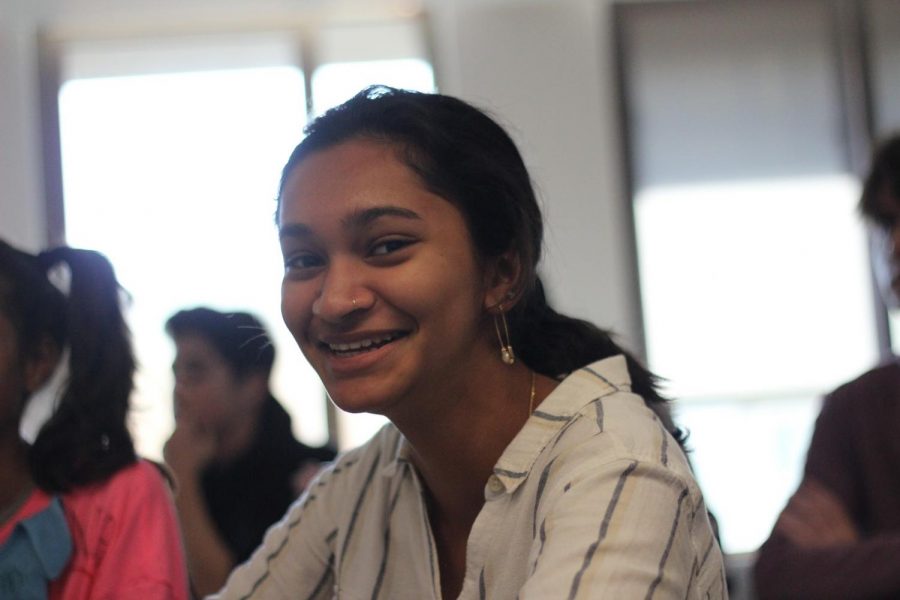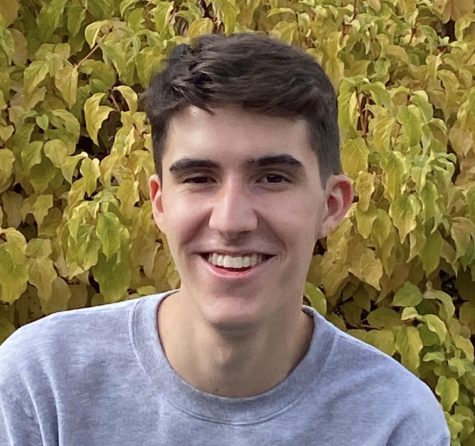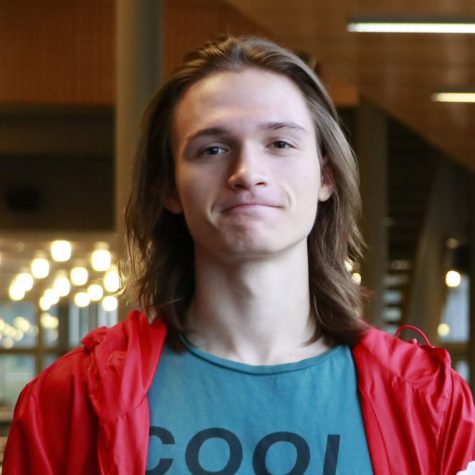Issaquah High Celebrates International Day of the Girl
WORK HARD, HAVE FUN Students at Issaquah High, such as freshman Anagha Rao, enjoy their time learning in the classroom.
November 1, 2019
On Friday, Oct. 11, the United Nations celebrated the eighth anniversary of the “International Day of the Girl.” The event, originally commissioned by a UN resolution in 2011, is inspired by the resilience that girls showcase globally in the face of oppression. It focuses on spreading awareness about issues challenging girls around the world, like child marriage and access to quality education. This year, the day’s theme was GirlForce: Unscripted and Unstoppable, which was intended to honor the 24 years since the Beijing Declaration and Platform for Action. The declaration, issued in 1995 during a global conference on women’s rights, has laid the groundwork for a multitude of countries in making laws against gender-based violence and ensuring that women have an adequate voice in the political field.
Former First Lady Michelle Obama announced that she would take a trip to Vietnam to highlight and share girls’ stories of pursuing an education, many of whom are challenged by cultural norms regarding gender or a lack of access to adequate school supplies. Global statistics indicate that over two-thirds of the world’s illiterate population are women. Girls in more rural areas face the most significant challenges to education access, often due to factors as simple as the distance from their homes to the closest school. The UN cites data stating that only 39 percent of rural girls attend secondary school globally. One group particularly committed to girls’ right to an education is Malala Fund, led by the famous activist Malala Yousafzai, who gained worldwide attention after being shot in the head by the Taliban for her activism for girls’ right to an education in Pakistan. The organization works in 12 different countries, lobbying political leaders, telling stories of girls fighting for education, and helping local activists groups, all leading to its goal of ensuring 12 years of “free, safe, quality education” for the more than 130 million girls worldwide not in school. Here at Issaqauh High School, the community is made better by so many involved female students, who use their education to positively impact others. In honor of International Day of the Girl, these are four of their stories.
Senior Ananya Sahoo, DECA President
Ananya Sahoo has been involved in DECA since her very first day at Issaquah High. Why does she keep coming back? “I have such a passion for the concepts that we learn in DECA, but more than that, the people in the club really inspire me to work harder.” As president, she hopes to increase the club’s membership and impact on the school, all while teaching members 21stcentury skills, like preparing for interviews and building resumes. Sahoo credits DECA with giving her the confidence to step outside of her comfort zone, adding that even though she hopes to work in the pre-medicine field, the club has “instilled in me the spirit of entrepreneurship, which is useful in all careers.”
As president, Sahoo fosters an inclusive and friendly environment, encouraging members to work with people different than themselves. She recognizes that the business world is not always the friendliest place to women, but believes that “if all genders work together to alleviate the gender gap in both pay and workforce, things will start to get done.” Sahoo also makes sure to use her position to make an impact on the local community. As of now, she is leading the effort to make DECA more sustainable, ditching plastic utensils and using compostable materials in the DECA store. Separately, she is providing members of the club with internship opportunities with major companies in the local area, all while working with Vital Voices, a global non-profit fighting for women’s empowerment. Sahoo is hopeful for the future of girls’ education and believes everyone has a part to play. She said, “We have to embody the leadership of women we want to be. Everyone, regardless of their gender, has to be their own example and set the standards for ourselves. Then we can raise those standards for future generations.”
Junior Sravani Nanduri, Robotics Programming Lead
Sravani Nanduri has been involved with robotics since middle school, and she is not planning on stopping anytime soon. She cites the enjoyment she gets from working with a team and being able to realize a final product, adding “I love to compete with other teams and hone my personal coding skills.” Nanduri spends her time as Robotics Programming Lead preparing code, getting members ready for the season, and mentoring newcomers when she has the time.
Though Nanduri recognizes the gender pay gap is shrinking at a relatively rapid pace in the STEM field, she believes there is more work to be done. “The goal is equal representation for all genders, because the more diverse team you have approaching a problem, the more range of opinions and capabilities you have as well.” She encourages more girls globally to get involved in STEM and believes it should be an opportunity for everyone to pursue. Nanduri plays a role in this herself, volunteering in her spare time to help younger kids with programming and coding. “The club brings STEM to those in smaller communities, to children who perhaps wouldn’t experience it otherwise. Everyone deserves the opportunity to experience STEM.”
Junior Anna Kiesewetter, HOSA Secretary
Anna Kiesewetter hopes to work in the medicine field one day and credits her experiences in HOSA as being tremendously helpful, providing her with problem-solving tasks and general knowledge of medicine. This year she works as HOSA secretary to keep the meetings’ minutes and attendance, while also helping the rest of the board plan and run the club. “I’ve learned to be more of a leader,” she said when asked about what the club has taught her.
Kiesewetter believes medicine is an incredibly important field for girls around the world to get involved in, adding that “there are still a lot of uncured diseases and underserved areas in need of medical attention.” She recognizes improvement in the field’s gender gap, noting that more women are becoming doctors, despite the stereotypical perception of them as just nurses. Many of HOSA’s members hope to be doctors, which she cites as being a long-term positive impact on the community. The club also works in volunteer programs and encourages high school students to donate blood. Kiesewetter hopes to see an increase in girls’ involvement in the medicine field globally. “It’s such a rewarding field. It feels good to help other people, especially underprivileged communities.”
Senior Diane Lee, JSA President
As JSA President, Diane Lee aims to increase the club’s civic engagement, taking it beyond debate and getting members to act on the issues they believe in. “I don’t care so much about numbers. I want to inspire you to make an impact on your community,” she said. She credits the club with teaching her how to have civil discourse and respectful disagreement, as well as increasing her own conviction around the issues she believes in. Specifically, she names climate change as a primary interest of hers, calling it “the biggest humanitarian crisis of our time.”
Lee strongly encourages more girls globally to get involved in the political field, noting how many issues specifically pertaining to women are being debated by courts and legislative bodies around the world. “When women are in power, the health, safety, and opportunities presented to women are better.” She certainly proves this to be true with her actions as JSA president, running a “fight apathy” campaign which gets members to volunteer for food and clothing drives, and work on other local projects benefitting the community.
Each student interviewed uses their own unique talents to help others and make a future for themselves, but they all had one thing in common: everyone repeatedly named fellow students as their inspirations, noting that they could not get what they do done without the support from peers. These students’ tremendous positive impacts on their community are a testament to the power of coming together for beneficial change and what one person can do when given an education.




